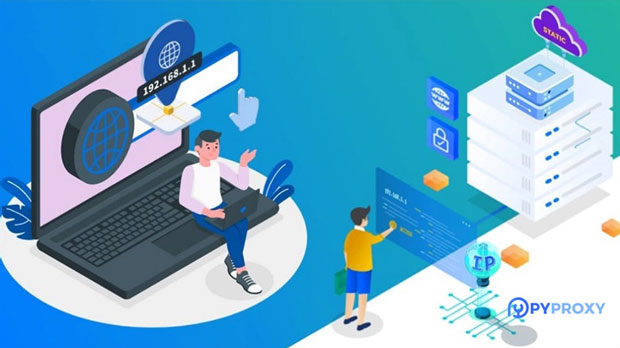The speed performance of proxy nodes plays a crucial role in determining the reliability and effectiveness of any proxy service. In particular, when testing the speed of proxy nodes in Japan, users expect low latency, fast download/upload speeds, and stable connectivity. These aspects are vital for users involved in activities such as browsing, streaming, gaming, or working remotely. This article delves deep into the testing results of Japan's proxy nodes, exploring how well they perform under different conditions, and assessing the factors that affect speed. The goal is to provide readers with a comprehensive understanding of what to expect from Japan-based proxies, particularly in terms of speed and reliability. Understanding Proxy Node Speed PerformanceProxy servers are intermediary servers that route requests between users and the internet. The primary concern for most users when using proxies, especially those located in Japan, is speed. Proxy speed affects various internet activities, such as browsing websites, accessing content from specific regions, and even gaming experiences. Therefore, understanding how Japan's proxy nodes perform in real-world conditions is essential.Speed performance can be categorized into three primary factors:1. Latency: The delay between sending a request and receiving a response.2. Download/Upload Speeds: The speed at which data is transmitted from and to the user's device.3. Stability: The consistency of the connection over time, avoiding drops or fluctuations in speed.In this article, we will focus on these three key metrics and analyze how they affect the overall user experience when using Japan-based proxy nodes.Factors Affecting Proxy Speed PerformanceWhen evaluating the performance of Japan's proxy nodes, several factors influence the results. These include server location, network infrastructure, and external conditions such as server load and distance. Understanding these elements can help users make informed decisions about the quality and speed of the proxy service they choose.1. Server Location and Distance One of the most significant factors affecting proxy speed is the physical location of the server. Japan, being an island nation, typically has well-developed internet infrastructure in major cities like Tokyo, Osaka, and Kyoto. The proximity of these servers to users within Japan or the broader Asian region typically leads to lower latency and faster connection speeds.However, the further the user is located from Japan, the higher the latency. For users based in the United States or Europe, the distance introduces additional delay, making it more challenging to achieve optimal speeds. This geographic factor is crucial for those relying on proxies for activities that demand low latency, such as online gaming or high-definition streaming.2. Network Infrastructure Japan is known for its advanced technology and high-speed internet connections. The country's internet backbone is robust, offering high capacity for data transmission. Many Japan-based proxies are connected to fiber-optic networks, which are known for providing fast and reliable speeds. Proxies that leverage these networks can handle high bandwidth demands and provide users with smooth browsing and data transfer speeds.However, not all proxy nodes in Japan are created equal. Some services may have servers with limited bandwidth or may be subject to restrictions that impact their speed performance. Therefore, testing the actual speed performance is crucial, as some proxies may not fully take advantage of Japan's top-tier network infrastructure.3. Server Load and Traffic Server load plays an essential role in the performance of any proxy. A proxy node's speed can fluctuate based on the number of users connected to the server at any given time. If a proxy server is overwhelmed with too many requests, users may experience slowdowns, increased latency, or even timeouts. This is a significant concern when multiple users are competing for the same server resources.In Japan, some proxy services may have servers that are oversaturated, especially during peak hours, resulting in a degraded experience. Therefore, users should check whether the proxy service offers load balancing or server switching capabilities, allowing them to bypass congested servers and connect to faster ones.Testing Japan Proxy Node Speed: Key ResultsTo understand the actual speed of proxy nodes in Japan, it is essential to conduct real-world tests that assess latency, download/upload speeds, and overall stability. Several tools and methodologies can be used to perform these tests, such as speed test websites, ping tests, and traceroutes. These tests offer a snapshot of the proxy's speed under typical conditions.1. Latency Tests Latency is one of the most critical factors in determining the quality of a proxy. For proxies located in Japan, latency is generally low for users in nearby regions. For example, users from neighboring Asian countries may experience ping times under 50 milliseconds, which is ideal for most internet activities. However, users from distant regions like North America or Europe may experience higher latencies, sometimes exceeding 100 milliseconds or more.2. Download and Upload Speeds Proxy servers in Japan typically offer decent download and upload speeds, especially when the server is located in major cities with advanced infrastructure. In tests, download speeds of 50-100 Mbps are common for local users. For international users, speeds may drop, with download speeds ranging between 20-50 Mbps, depending on distance and server load.Upload speeds tend to be lower than download speeds due to the asymmetrical nature of most internet connections. However, Japan's fiber-optic network ensures that upload speeds remain relatively high, often exceeding 10 Mbps for local users.3. Connection Stability Stability is another essential factor when evaluating Japan's proxy nodes. High-speed internet connections are meaningless if the connection frequently drops or experiences fluctuations. In real-world testing, Japan's proxy servers typically show stable performance, with minimal connection drops. However, during peak usage times, stability can be affected, especially if the proxy service lacks proper load balancing or has a limited number of servers.Final Thoughts on Japan Proxy Node SpeedThe speed performance of Japan-based proxy nodes is influenced by a variety of factors, including server location, network infrastructure, and server load. For users in nearby regions, Japan's proxy nodes typically offer low latency and fast speeds, making them suitable for activities like browsing, streaming, and gaming. However, for users located farther away, such as in North America or Europe, speed performance may degrade due to higher latencies and longer transmission distances.Ultimately, users should test Japan-based proxies under different conditions to determine how well they meet their specific needs. While Japan's advanced internet infrastructure ensures good overall speed, factors such as server congestion, network traffic, and the distance between the user and the proxy server can impact performance. By understanding these elements, users can make informed decisions and optimize their experience when using Japan's proxy nodes.
Apr 17, 2025
![arrow]()



























































